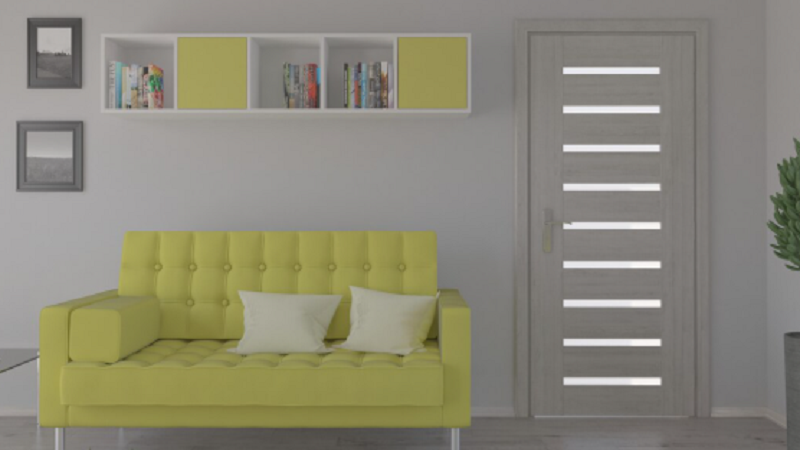We spend weeks choosing the perfect sofa and agonizing over paint swatches, but what about the one design element we physically interact with more than any other? Doors are often treated as a mere necessity—something to simply separate one room from another. Yet they hold the potential to be the most transformative feature in a room, quietly waiting for us to recognize their power.
Think about it: you touch a door handle dozens of times each day. You see doors from multiple angles as you move through your home. They frame your view as you transition between spaces. Despite this constant interaction, most of us default to the standard hinged door without a second thought.
But designers and architects are increasingly using innovative door styles to add character, solve spatial puzzles, and define the personality of a home’s interior. This shift represents a fundamental rethinking of what doors can be—not just functional barriers, but design statements that enhance how we experience our living spaces.
This article will move beyond the standard hinged door to explore a world of creative and stylish options that can elevate your space from ordinary to extraordinary. Why does this matter? Because choosing the right door is an opportunity to make a bold design statement, enhance functionality, and add a custom touch that makes your home uniquely yours.
Rethinking Movement: Doors That Do More Than Just Swing
The traditional hinged door has served us well for centuries, but it’s not always the smartest choice for modern living. When every square foot matters, and when we crave spaces that flow seamlessly from one to another, we need doors that work harder and smarter.
The Modern Space-Saver: Barn Doors
No longer just for farmhouses, modern barn doors have undergone a sophisticated evolution. Today’s versions feature sleek hardware and embrace a variety of materials—from minimalist wood to glass and steel combinations. They slide along a track parallel to the wall, creating a completely different rhythm of movement through your space.
The personality they bring is unmistakable: architectural, slightly industrial, or rustic-chic, depending on your material choices. A barn door acts as a moving piece of wall art, changing the visual dynamics of a room each time it slides open or closed.
These doors shine in spaces where traditional swing doors would eat up valuable floor space:
- Pantries and walk-in closets
- Home offices that need occasional privacy
- Laundry rooms in tight hallways
- Any opening where you want to maximize usable square footage
When planning for a barn door, remember that the door rough opening needs to account for the sliding mechanism and track system, which may require adjustments to standard framing.
The Disappearing Act: Pocket Doors
The pocket door represents the ultimate space-saving solution. This classic design slides directly into a hollow cavity within the wall, vanishing completely when open. It’s architectural magic—one moment the door is there, the next it has seemingly disappeared into thin air.
The personality of a pocket door is pure minimalism. It creates a seamless, uncluttered look that’s perfect for maintaining an open-concept feel even when a room needs to be closed off. There’s something almost zen-like about a door that can completely remove itself from the equation.
Pocket doors work beautifully for:
- Powder rooms where you want maximum floor space
- Laundry rooms that can hide away when not in use
- Walk-in closets that benefit from unobstructed access
- Any space where visual continuity is paramount
The key consideration with pocket doors is that they require a specially framed wall cavity, so they’re easier to incorporate during construction or major renovation.
The Dramatic Entrance: Pivot Doors
Instead of hinging at the side like traditional doors, pivot doors rotate on a central or offset point at the top and bottom. This unique mechanism creates an entirely different opening experience—one that feels both ancient and ultra-modern.
The personality of a pivot door is unquestionably dramatic and high-end. The unique opening mechanism creates a sense of occasion and architectural significance. Every time you open a pivot door, it feels like you’re making an entrance rather than simply moving between rooms.
Pivot doors make the most impact when used for:
- Main living area transitions
- Home office entrances that need gravitas
- Master suite entries where you want drama
- Any location where you’re ready to make a bold statement
The beauty of pivot doors lies in their ability to handle larger, heavier door panels that would be impractical with traditional hinges, opening up possibilities for oversized glass panels or substantial wood slabs.
Playing with Transparency: Doors as Walls of Light
Sometimes the most innovative approach to doors involves rethinking opacity entirely. When you want to separate spaces without losing light or visual connection, transparent and semi-transparent doors offer compelling solutions.
The Industrial Edge: Crittall-Style Doors
Characterized by their black steel frames and grid-like glass panels, Crittall-style doors bring a sophisticated industrial aesthetic to residential spaces. These doors and partitions offer a chic look that feels both vintage and completely contemporary.
The personality they project is sophisticated, edgy, and surprisingly timeless. They define a space without visually closing it off, allowing light to flow freely while maintaining the psychological boundary that a door provides. There’s something inherently honest about their construction—the steel framework is celebrated rather than hidden.
Crittall-style doors excel at:
- Separating kitchens from living areas while maintaining openness
- Creating stylish home offices that feel connected yet distinct
- Elegant shower enclosures in master bathrooms
- Any location where you want industrial chic with refined execution
When considering a door rough opening for Crittall-style doors, the steel framework requires precise measurements to ensure the grid pattern aligns properly with the opening.
The Charming Split: Dutch Doors
The Dutch door, divided horizontally to allow the top half to open independently of the bottom half, brings instant charm to any space. This design dates back centuries but feels remarkably fresh in contemporary interiors.
The personality of Dutch doors oozes character and a sense of friendly, casual living. They’re both whimsical and highly practical, offering the unique ability to provide partial access and ventilation while maintaining a barrier where needed.
Dutch doors work wonderfully for:
- Kitchen entrances, especially those leading to outdoor spaces
- Mudrooms where you want to monitor activity while containing mess
- Children’s playrooms for supervision without full access
- Any space where you want to add unexpected charm
The split design allows for creative paint treatments—you might choose different colors for the top and bottom sections, or use the horizontal divide as an opportunity for creative hardware placement.
The Element of Surprise: Doors That Blend In
Sometimes the most innovative door is the one you don’t immediately notice. Hidden doors and seamless transitions represent the cutting edge of residential door design, creating moments of surprise and wonder in everyday spaces.
The Hidden Gem: Jib Doors
A jib door is the master of disguise in the door world. This frameless, flush door is designed to blend seamlessly into a wall, featuring no visible trim or hardware. Often equipped with a touch-latch mechanism, these doors create clean, uninterrupted wall surfaces that hide their function until activated.
The personality of jib doors is mysterious, clever, and utterly minimalist. They create visual calm while adding an element of surprise that delights both residents and guests. There’s something inherently satisfying about discovering a hidden door—it makes a space feel custom and considered.
Jib doors are perfect for:
- Concealing powder rooms in open-plan living areas
- Hiding storage closets without visual interruption
- Creating “secret” passages to private studies or reading nooks
- Any location where you want clean lines with hidden functionality
The success of a jib door depends heavily on precise installation and high-quality hardware, as any misalignment becomes immediately obvious in such a minimal design.
When planning the door rough opening for a jib door, extra attention must be paid to ensure perfect alignment, as these doors rely on seamless integration with the surrounding wall surface.
Every Door Is an Opportunity
Modern doors have evolved far beyond simple functionality, transforming into powerful design tools that can reshape how we experience our homes. By exploring different movements, materials, and styles, you can find solutions that not only save space and enhance functionality but also inject a powerful dose of personality into your living environment.
The doors we’ve explored—from space-saving barn doors to mysterious jib doors—each offer unique ways to solve common design challenges while adding visual interest. Whether you’re drawn to the industrial sophistication of Crittall-style glass doors or the charming practicality of Dutch doors, each choice represents an opportunity to customize your space in meaningful ways.
As you consider your own home, think of every door not as a barrier, but as a canvas. Each opening is an opportunity to create a moment of surprise, add a touch of drama, or craft a seamless transition that elevates the everyday experience of moving through your space. In a world where personalization and thoughtful design matter more than ever, innovative doors offer one of the most impactful ways to make your home truly your own.

